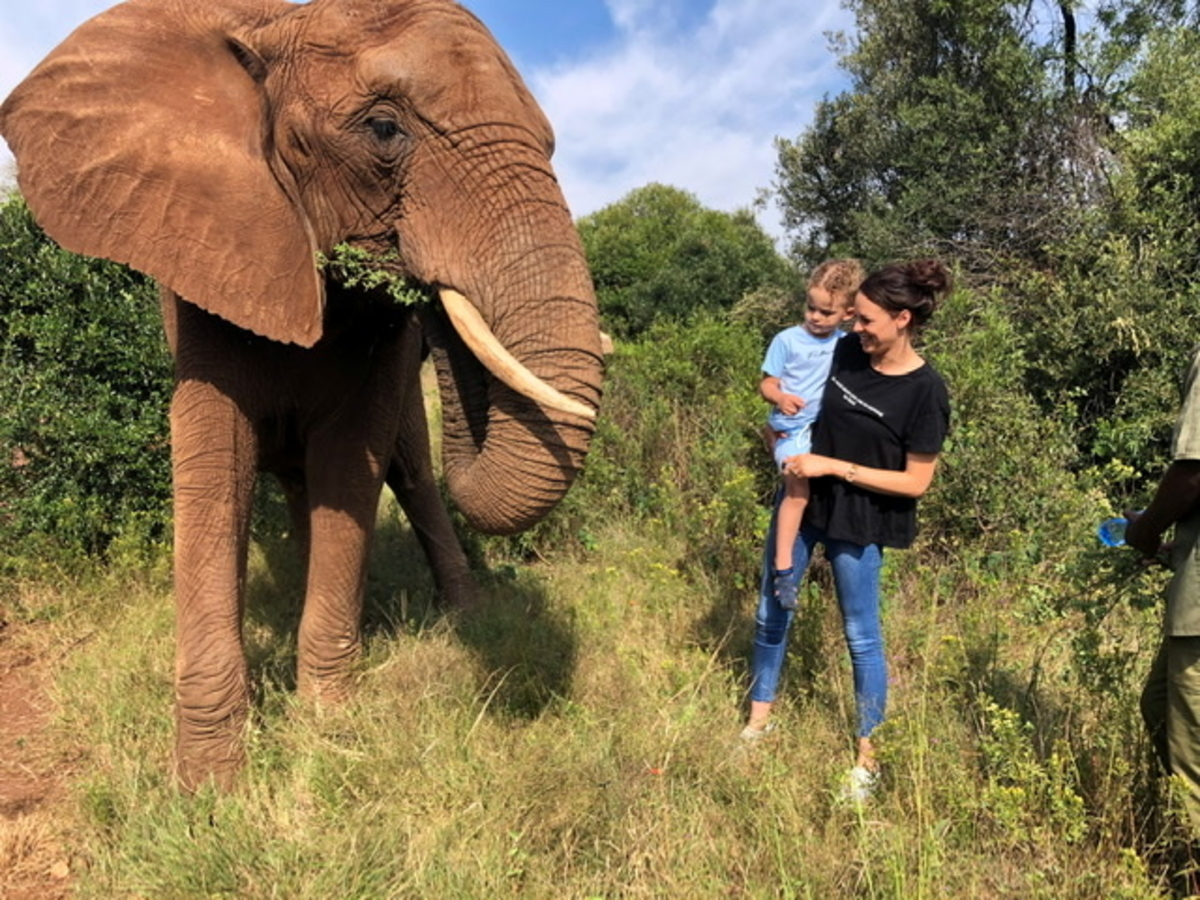There is an old African story that answers why the lion is the king of the jungle, and not the elephant. The lion was the king of the jungle and had the power to do whatever it wanted. The elephant, its sworn enemy given that many animals questioned the birthright claimed by the lion, believing the elephant more deserving of the title.
Always calm and compliant, the elephant continued to go about its business. One day, the lion’s cub got caught underneath a heavy branch that fell from a tree. Crying for help, the elephant took pity on the youngling and saved its life. This act of kindness forged a new friendship between old enemies, and the lion appointed the elephant as prime minister of the jungle.
Elephants are fascinating animals. They are the largest land animals currently in existence, can live up to 70 years of age and are afraid of bees. There are two types of elephant, the somewhat smaller in stature Asian elephant and the gigantic African elephant.
It is the latter that visitors to Glenafric, near the Hartbeespoort Dam, can engage with. Quite literally, to walk up to them, touch them, love them and be in one-on-one awe with these massive wonders of evolution. If there is quiet, without any sudden moves, even children can come close and experience the majesty of these animals.
Glenafric is situated about an hour’s drive from Johannesburg and while it is so close to the city, a day trip to see the elephants can make a few hours feel like a real bush holiday.
On arrival, everyone is briefed, and a quick game drive takes you to where the small herd of mother and sons are grazing. It is quite scary to get so close to such a giant animal, and after seeing YouTube videos of elephants overturing and crushing cars in nature reserves, a little bit of apprehension goes without saying.
Yet, when the ranger hands you a branch of mint leaves, a favourite ellie snack, and the giant trunk sniffs your hand before curling around its treat and devouring same, the absolute greatness of nature really hits home.
Visitors can stroke the elephants, and if you can reach even feel the soft, velvety texture of its ears.
Elephants evolved in Africa between 56 and 33 million years ago. After that, some 20 million years ago, they migrated via land bridges to populate every land mass except Australia and Antarctica.
There were even elephants in the North America, extinct now for about 10 000 years. In fact, elephant fossils are the most common ancient remnants in the US state of Nebraska.
Today, Africa and Asia are the only two remaining habitats with the two different species. These incredible animals consume up to 276 kilos of food a day, drink up to 190 litres of water during the same time and use mad-baths as sunscreen.
Watch out of a dust bath when visiting. Trunks hoover up a vast quantity of sand which is then blown out over the elephant’s back. It can get a little dirty. Watching the elephants rip branches off trees with their trunks and then gently sniff visitors is incredible.
According to the guides at Glenafric, their memory is so good that once your unique scent has been registered, the animal will remember you on a second visit. There are more than 50 000 muscles in an elephant trunk, they use if for communication, comfort touch and of course to move things.
A branch or tree trunk weighing 150kg is child’s play for an elephant to move around, and some reports hint that even weight closer to a ton can be easily moved. Not so far fetched when considering domesticated elephants in Asia have been used in forestry for centuries.
There are not enough synonyms in a thesaurus to describe the experience. Even for a child, whose memory will enjoy this imprint for decades. The elephant experience is almost too good to waste time by taking loads of selfies.
It is awe inspiring, enriching and stirs a whack of emotion deep inside. It also clearly demonstrates why wildlife preservation and conservation of our natural heritage is so important.
For kids, it is an experience of a lifetime and so much better than staring at an elephant in the distance, through a car window or in a zoo enclosure. It is a bucket list must-do of must-dos.
At Glenafric a visit to the elephants in the bush lasts thirty minutes, just enough for a fantastic experience without intruding too much. The resort also offers walks with elephants, a must for a second and third visit.
The elephant experience costs R 255 per adult and R 127,50 for a child and there are only 3 scheduled encounters daily, with limited numbers per instance. Booking is essential.

Hein Kaiser
About the author:
Hein Kaiser is a seasoned journalist, broadcaster, producer, and marketing communication professional and has worked in a variety of markets, sectors, and countries. He presently hosts the 360 Brunch over weekends on Mix 93.8FM.
For more news your way, download The Citizen’s app for iOS and Android.

